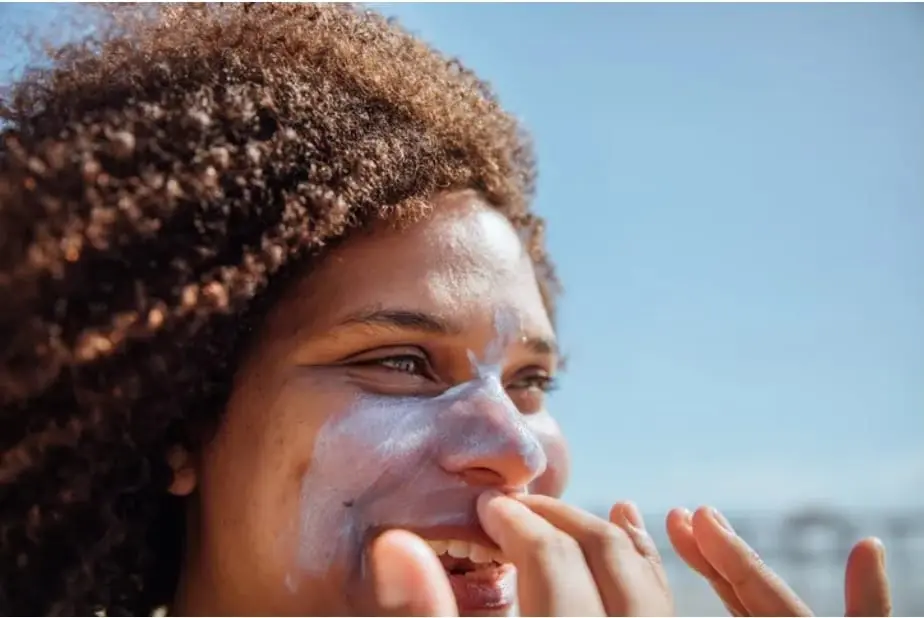TL;DR: Mineral SPF pills when layers clash or dry unevenly. Let each step set, use lighter bases, and try Blue Lizard’s gentle zinc-and-titanium formula for a smoother finish.
You go and spend money on a decent sunscreen, apply it carefully, and then, within minutes, it starts rolling off in tiny white bits. It looks messy, feels worse, and makes makeup impossible. If this sounds familiar, don’t worry. It’s not you. A mineral SPF can pill for an array of reasons, and the good news is that most of them are easy to fix.
In this article, we’ll look at the causes, what to avoid, and how to stop it from happening again, so you can finally get the protection AND comfort you deserve.
Reason #1 – Layering Products Too Quickly Can Cause Mineral SPF to Pill
The most common reason pilling happens with sunscreen is simple impatience. If you’re applying moisturizer, serum, or primer immediately before sunscreen, the products haven’t had time to set. When you smooth on a mineral SPF, the physical layer grabs at the damp base underneath and starts to roll.
What to do instead:
- Give each layer at least 5–10 minutes to dry before applying the next.
- Swap heavier creams for lighter gels or emulsions under SPF.
- Instead of rubbing, use short pats to press the sunscreen into place.
That small change usually cuts the problem in half.
Reason #2 – Incompatible Formulas Can Trigger It
Even when your routine seems fine, the ingredient bases in products can still clash. Silicones, oils, and some polymers in skincare don’t always mix well with the zinc oxide and titanium dioxide particles used in mineral sun protection. The result: that gritty, flaky finish.
What to look for:
- If your moisturizer lists dimethicone, cyclopentasiloxane, or trimethylsiloxysilicate near the top, it’s silicone-heavy and may resist mineral sunscreen.
- Pair like with like – water-based under water-based; silicone under silicone.
- Don’t combine primers with mineral SPF unless the brand specifically says they’re compatible.
It’s a small step that allows your sunscreen to go and stay on as it should.
Reason #3 – Too Much Product Builds A Dry Surface Layer
It sounds backwards, but using more sunscreen than skin can hold leads to texture issues. The top layer dries before the rest can set, creating tiny flakes when touched or blended.
How to fix it
- Apply one finger-length of product per section of the face, not a thick glob at once.
- Spread quickly, then leave it alone – the more you smooth, the more you disturb the barrier.
- If you need extra coverage, build a second light layer after five minutes rather than one heavy coat.
Following these rules means you’ll end up with the right base for the application.
Reason #4 – Mineral Filters Can Settle If They’re Not Blended Well
Some mineral sunscreens naturally separate a little in the tube. It’s not a bad thing – just chemistry. However, when that happens, the zinc or titanium particles cluster, making texture problems worse.
Check before you apply:
- Shake or knead the tube gently before use.
- Store it away from direct heat to prevent separation.
- If it’s an older bottle and feels grainy, it’s probably time to replace it.
A vigorous shake before you use any sunscreen is a wise move, no matter what the formula is.
Reason #5 – Not Being Careful With Your Brushes
Even when you’ve given SPF time to dry, heavy blending or dense brushes can still break the film that’s protecting your skin. Mineral sunscreens form a physical layer, which means that if you drag tools or powder textures across the area, it can lift it right off.
How to avoid it
- Use a damp sponge and press makeup in gently instead of buffing.
- Stick to cream or liquid foundations; powders tend to catch and lift.
- Apply makeup sparingly – too much pressure or layering disturbs the sunscreen barrier.
Ensuring that Your Mineral SPF Applies Smoothly
Pilling doesn’t mean your sunscreen’s bad. It’s often just a chemical reaction caused by impatience. Most fixes come down to giving each layer breathing space, choosing compatible products, and resisting the urge to overwork the surface.
So, if you want to minimise the risk entirely, go for a light, stable mineral product that spreads cleanly without relying on heavy silicones or fragrances. Good sunscreen doesn’t need perfect technique – just the right routine and a bit of patience.
Also READ-How LATAM’s Tech Talent Is Driving Digital Transformation Globally

